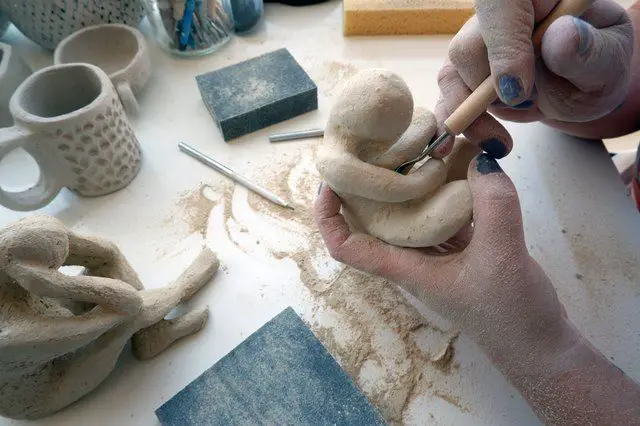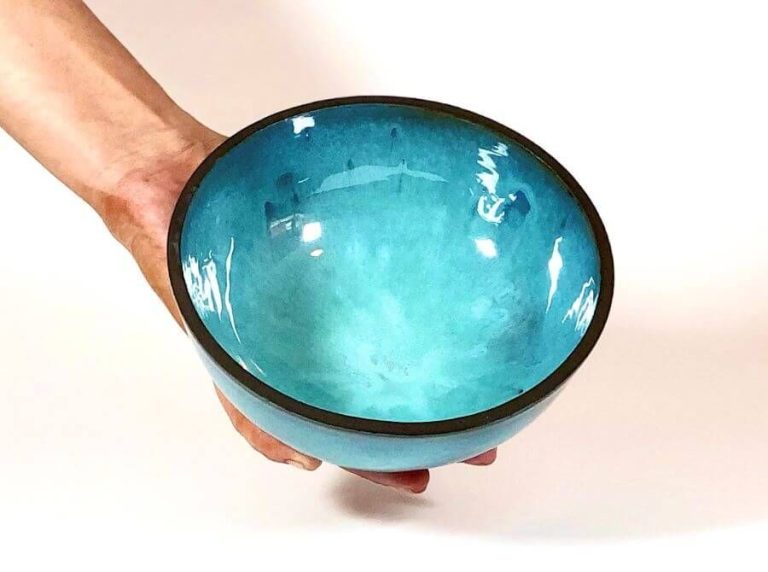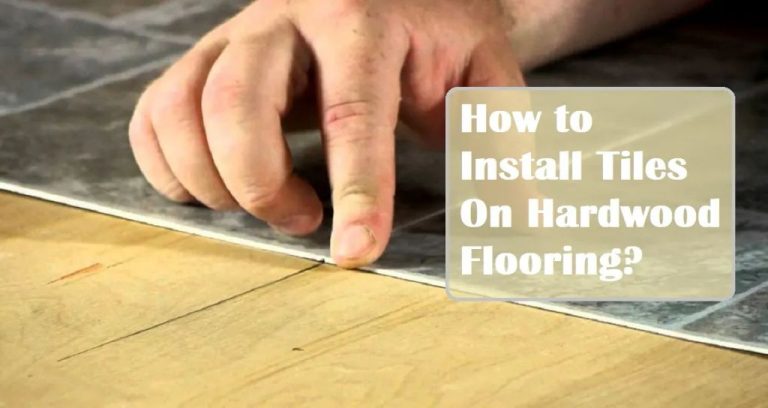Can You Make A Career Out Of Pottery?
Pottery refers to ceramic material that has been shaped by forming techniques such as molding, throwing, and handbuilding. It is one of the oldest and most widespread of human technologies, older than metallurgy. Pottery is made by forming a ceramic (often clay) body into objects of a desired shape and heating them to high temperatures in a kiln to induce hardness and permanence. As an art form, pottery encompasses any ceramic material that is shaped and hardened permanently after shaping. Ceramics are inorganic, nonmetallic materials that are essential to modern life.
According to the Cambridge Dictionary, pottery is “objects made from clay that have been hardened by heating them to a high temperature, such as plates, pots, etc.” 1 While ceramics refers more broadly to “objects, especially pots, made out of baked clay.” 2 So pottery refers specifically to clay objects, while ceramics encompasses all nonmetallic inorganic materials.
History of Pottery
The history of pottery dates back thousands of years, with evidence of primitive pottery vessels dating to at least 24,000 years ago during the Paleolithic era. Ancient pottery has been discovered across the world, indicating that early human civilizations in China, Japan, the Mediterranean, and Mesoamerica all independently invented pottery technology. According to Artabys, pottery was an essential technology for storing, carrying, and cooking food as early human societies transitioned to more settled lifestyles based around agriculture.
Some of the earliest known pottery was made in East Asia during the Neolithic period. Primitive forms of pottery containers and vessels have been found at Jomon sites in Japan dating back to 16,000 BCE. In China, pottery dating back to 20,000 BCE has been found, with major advances occurring during the Yangshao culture between 5000-3000 BCE. During this time, wheel-made pottery, glazed stoneware, and high-fire kilns were developed in China. In the West, ancient pottery traditions also emerged in Mesopotamia, Egypt, Greece, and Rome, with earthenware pottery used for trade, storage, and everyday purposes. According to Sifounios Pottery, the Mesopotamians created glazes as early as the 3rd millennium BCE by combining silica, lead and soda.
Types of Pottery
There are three main types of pottery: earthenware, stoneware, and porcelain. Each type has its own characteristics and uses.
Earthenware is pottery that has been fired at lower temperatures, typically between 1000°F-1200°F. It is porous and less durable than other types of pottery. Common examples include terra cotta flower pots and dinnerware. Earthenware can be glazed to make it less porous and water resistant. Unglazed earthenware absorbs liquids easily (https://deneenpottery.com/pottery/).
Stoneware is fired at higher temperatures ranging from 2200°F-2400°F. The higher heat makes stoneware non-porous and more durable than earthenware. Stoneware has a hard, compact surface that resists scratches and chips. It is commonly used to make crockery, jugs, pots, and casserole dishes. The high firing temperature allows stoneware to be left unglazed (https://en.wikipedia.org/wiki/Pottery).
Porcelain is fired at the highest temperatures, between 2200°F-2400°F. It is made from finer clay that becomes glass-like when fired, making it very hard, non-porous, and durable. Porcelain is highly resistant to chipping and scratching. It has a white color and translucent quality when thinly potted. Common uses of porcelain include bone china dinnerware, art pottery, figurines, and sanitaryware.
Pottery as a Career
Many potters start out making pottery part-time or as a supplemental source of income before transitioning to full-time. According to Joshua Zucker – Mr. Wren & Friends, potter Joshua Zucker had a background in photography and filmmaking but eventually pursued pottery as a full-time career. For some, pottery remains a part-time endeavor that provides extra income while keeping their day job.

Starting out part-time allows potters to build their skills and reputation while maintaining a steady income. Over time, as sales and commissions increase, some potters are able to transition to full-time. However, the income potential varies widely. While some achieve a livable wage from their pottery alone, others supplement through teaching workshops or with a separate part-time job.
Overall, pottery can realistically provide full-time, part-time or supplemental income. According to Spring Rotation 2016, potter Agnes Baron was able to build a successful full-time career making pottery with enough demand that she had a waiting list for seconds. But for many, pottery remains a part-time endeavor or supplemental income source alongside other work.
Education
There are several paths to gaining the necessary education and skills to become a potter.
Many aspiring potters pursue formal education by earning a degree in ceramics or pottery. This involves taking courses at art schools, universities, or community colleges to learn fundamental techniques and build a portfolio. Programs offer classes on throwing, handbuilding, sculpture, mold making, glazing, and more. Students have access to facilities like studios, kilns, and wheels to gain hands-on experience. A BFA, BA, or AA degree in ceramics provides a strong foundation for a pottery career (source).
Another option is to become an apprentice under an established potter. This involves exchanging labor for direct training in a pottery studio. Apprentices learn by observing and assisting with tasks like wedging clay, operating the kiln, mixing glazes, and keeping tools organized. Mentors teach apprentices techniques through one-on-one guidance. This hands-on approach allows aspiring potters to develop skills quickly (source).
It’s also possible to teach yourself pottery as a beginner. Useful resources include books, online tutorials, videos, and local community classes. With practice and experimentation at home, self-taught potters can gain proficiency. However, it may take longer without expert instruction. Joining a studio to access equipment can help supplement self-education.
Business Considerations
Starting a pottery business requires careful planning and consideration of costs, marketing, and legal issues. According to Great Advice on Starting a Pottery Business, the startup costs for a pottery studio can range from $10,000 to $30,000 for equipment like wheels, kilns, basic tools, and materials. Ongoing expenses include studio rental, utilities, supplies, transportation, marketing, insurance, and taxes. Developing an effective marketing strategy is critical, and options include social media, websites, local arts fairs, and galleries. Legally, you may need business licenses, sales tax permits, zoning variances, commercial property insurance, product liability insurance, and resale certificates.
When starting any new business, it is important to create a detailed business plan outlining costs, target customers, pricing, studio requirements, equipment needs, and revenue projections. Consult with business experts like attorneys, accountants, and the Small Business Administration for guidance. With careful planning and execution, a pottery business can be financially and creatively fulfilling.
Income Potential
The income potential for potters varies greatly depending on factors like skill level, reputation, geographic location, and whether you sell work on your own or work for an established pottery studio or school. According to the Bureau of Labor Statistics, the median annual wage for craft artists like potters was around $30,000 in 2021.[1] However, experienced potters who sell their work at art fairs, galleries, or online can earn much more.
For example, one survey by the Crafts Report found that full-time studio potters earned an average income of $20,000-30,000 from their work, with the top 10% earning over $70,000.[2] Much depends on volume – producing enough quality pieces to sell regularly. Marketing and social media skills also help drive online sales. Custom commissions and teaching workshops or classes offer additional income streams. Overall, talented potters who actively promote their work and sell to collectors or high-end markets can potentially earn a good full-time living from pottery alone. But it requires business savvy and dedication to treat pottery as a career rather than just a hobby.
[1]https://www.bls.gov/ooh/arts-and-design/craft-and-fine-artists.htm
[2]https://ceramic.school/how-much-can-you-earn-by-selling-your-ceramics-online/
Lifestyle
A potter’s lifestyle often revolves around their work schedule and environment. Many potters work long hours in their studios, which can be an isolated setting. According to one source, “Potters often work alone for long, concentrated periods of time.” (https://thepotterywheel.com/what-does-a-potter-do/) The work is very hands-on and physical, requiring potters to stand at their wheel for hours at a time. Workdays often start early, as the clay must be wedged and prepared before throwing begins. The studio environment can be dusty and dirty, requiring clean up at the end of each day. While the work itself may not be collaborative, potters often participate in a community by taking workshops, attending conferences, or teaching classes. The solitary nature of pottery can make work-life balance challenging. However, the flexibility of being self-employed allows potters to structure their schedule around their lifestyle needs.
Challenges
Making pottery can be physically demanding. Throwing pots on a wheel requires strong arms and wrists to center the clay and shape it into the desired form. Handbuilding techniques like pinch pots and coils can lead to sore hands and fingers from the repetitive motions. Loading and unloading heavy kilns full of ware takes strength and stamina.
There is also a lot of competition within the pottery field. With the popularity of pottery classes, many people try their hand at making pottery. Those wanting to make a career out of it have to work exceptionally hard to differentiate themselves and stand out from the crowded field of creators. It takes dedication, passion, and perseverance to make it professionally. As Geraldine Lovato states, “It’s very competitive, it’s hard work…You really have to promote yourself and get your name out there.” (https://sarweb.org/education/online-exhibitions/evolution-in-clay/geraldine-lovato/)
Conclusion
Making a career out of pottery is certainly possible, but does require dedication, passion, business savvy, and persistence. While the path may not be easy, for those with the drive and talent, building a pottery business can lead to a fulfilling and creative career. The keys are developing expertise in your chosen pottery niche, learning the business side of selling your wares, connecting with the pottery community, and relentlessly marketing yourself. With hard work and ingenuity, many potters successfully sell their creations full-time. Though income potential varies, top pottery artists can earn respectable livings. For aspiring potters with the right mix of artistry and entrepreneurship, turning pottery into a career is an achievable dream.




